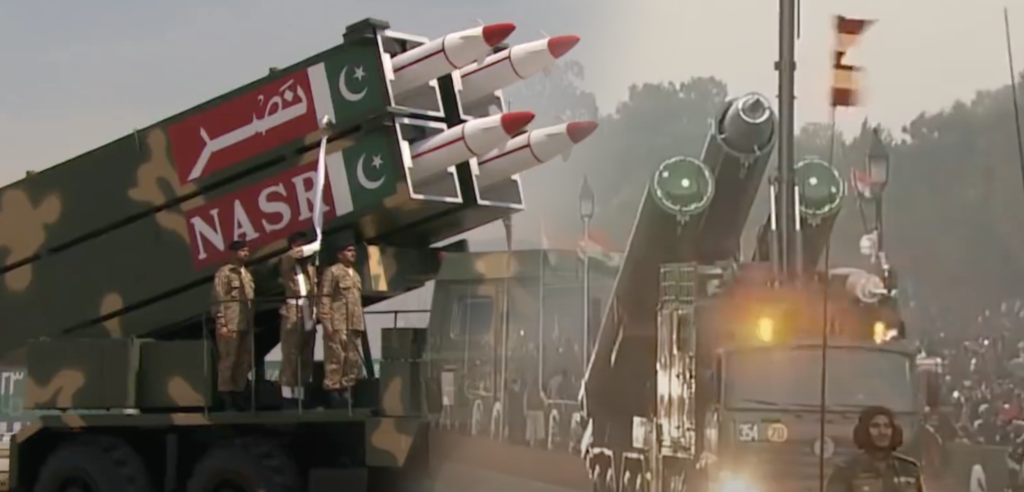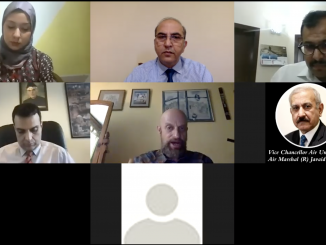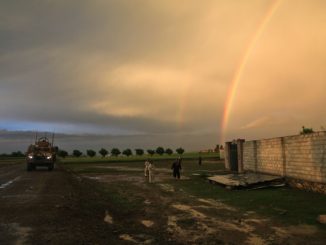
Ever since the nuclearization of South Asia, the dynamics for war and security have changed with a constant threat to regional stability. In 1974, India carried out nuclear tests under the shadow of Peaceful Nuclear Explosion (PNE) but declared itself a nuclear state in May 1998, after conducting five tests on 11th and 13th May. In response, Pakistan conducted six nuclear tests on 28th May 1998 despite the continuous pressure from the international community not to follow suit.
Twenty-two years since nuclearization, the nuclear capabilities and doctrines of India and Pakistan have evolved through considerable alterations. On the Indian side, the country developed ‘Draft Nuclear Doctrine’ in 1999, which centrally emphasized on ‘No First Use’ policy. But a significant amendment in this doctrine came out in January 2003 stating that if India is attacked by biological or chemical weapons, it reserves the right to retaliate with nuclear weapons. Though the amendment in the doctrine was illogical, given that the biological or chemical warfare is usually conducted by nonstate actors, it ambiguously displays that India could back off from its NFU policy.
Since 2016-2017, the Indian defence and strategic community have been pivoting towards the idea of ‘splendid first strike’, according to which if Pakistan involves nuclear weapons during war, India will originate a pre-emptive ‘splendid first strike’; the perfect first strike scenario would allow India to prevent itself from the tit-for-tat engagement of nuclear escalation and attack Pakistan with full-fledged power to avoid significant retaliation. The next essential doctrine – the so-called ‘Cold Start Doctrine’ – was followed by the test conducted by Pakistan of the nuclear-powered close-range ballistic missile: Nasr. The doctrine allows the Indian military to perform offensive operations as a unified group in case of a possible conventional war with Pakistan.
Moreover, India has increased its nuclear capabilities on land, air and sea. It contains 130-140 nuclear warheads and is likely to increase to 200 by 2025; it has four types of ballistic missiles on land, two types of nuclear-capable aircraft and three types of sea-based ballistic missiles. Hence, the deployment of nuclear-powered weapon systems negates the very idea of NFU policy and threatens the deterrence policy of Pakistan.
Pakistan, on the other hand, has developed its ‘Full Spectrum Deterrence (FSD)’ under the Credible Minimum Deterrence. It centrally states that Pakistan will use its nuclear or conventional capabilities for deterrence stability in all domains and not indulge in offensive escalation. Even in the recent Balakot airstrike, Pakistan’s response was retaliatory. However, it has expressed concerns regarding the ‘first strike’ option if India tries to cross Pakistan’s red lines. In a defensive context, Pakistan has also deployed tactical weapons on land, sea and air under FSD. Pakistan has developed National Command and Control (NCC) for nuclear authority, and it focuses on control more than the command because of its defensive doctrinal posture.
The security dilemma has compelled Pakistan to enhance its defence build-up. The national security establishment believes that Pakistan could face two scenarios: 1) India’s pre-emptive first strike; and 2) The United States’ attack on India’s behalf. The FSD was employed to deter and retaliate a pre-emptive strike from Pakistan’s adversaries, but since February 2019’s surgical strike by India, the deterrence credibility of FSD is being questioned, albeit it was designed to deter war and not surgical strikes.
India’s divergence from NFU, increased surgical strikes (Pathankot, Uri and Balakot) and its shift towards a pre-emptive strike doctrinal posture indicates that India is looking for a crisis-like situation to destabilize the region and thus, Pakistan. In a nutshell, India seeks to apply its vast military, and technological modernization and Pakistan seeks to prevent war through FSD and careful deterrence.
Nuclearization made South Asia a dangerous place, given the doctrinal postures of India and Pakistan that have followed in twenty-two years. It is certain, experts argue, that even a small-scale nuclear escalation could result in an unprecedented catastrophe because of the high urban population of the two countries. On the other hand, the fear of nuclear escalation has restrained both countries from increasing conventional war on several occasions: 1999’s Kargil war, 2001-02’s Twin Peak Crisis and 2008’s Mumbai terrorist attack. But the fear of escalation is always present, given the scenario of conventional war being forced to convert into a nuclear one if the losing side has no other options left.
Although nuclearization was initially lauded by the internal establishment and populace of these countries with the escalating dispute between the two nuclear states, the threat to regional and global stability is becoming evident.
As Henry Kissinger wrote,
“In Greek mythology, the gods sometimes punished man by fulfilling his wishes too completely. It has remained for the nuclear age to experience the full irony of this penalty. Throughout history, humanity has suffered from a shortage of power and has concentrated immense effort on developing new sources and special applications of it. It would have seemed unbelievable even fifty years ago that there could ever be an excess of power that everything would depend on the ability to use it subtly and with discrimination.”
The questions arise with the proliferating chances of catastrophic confrontation, what can both countries do to avoid nuclear confrontation and ease tensions in the region? Can India and Pakistan reach a treaty to ease tensions in the region?
A treaty or agreement requires cooperation from both countries. Hence, four steps can be taken to alleviate tensions. Firstly, India must rethink Pakistan’s proposal of Strategic Restraint Regime which the latter offered in 1998 for substantial peace in South Asia. It emphasizes a comparable reduction in the armed forces, stable deterrence and a peaceful resolution of all disputes between the two countries. The peaceful proposal was introduced to keep South Asia out of the nuclear arms race. Secondly, both countries must reach a Détente (period of easing tensions during the cold war) to develop treaties to control the arms race. Thirdly, they must develop a mutual Crisis Management Mechanism to prevent accidental use of nuclear weapons. Both countries have developed nuclear command and control centres, but a joint management organization could be more effective. Lastly, hold frequent mutual dialogues in good faith.
Nuclearization does help in enhancing regional hegemony for ambitious states, but the repercussion it brings is disastrous.
![]()




Nuclearization was considered as a great equalizer but given the repercussions, it’s catastrophic
Great equalizer and now great destabilizer
India’s inclusion towards aggressiveness will become the fall of the region.
India cannot neglect the fact that they will suffer from aggressiveness too
Pakistan knows its game in deterrence. AQ Khan did his job well
Peacemaker force is traditionally one powerful political force to which is known the guards of democracy. May Allah protect us from the enemies
Yes absolutely
And we house arrested a man who made us a nuclear state
Pakistan’s doctrinal posture is basically defensive
The absolute opposite of India
Pakistan know how to deal with their enemies.
Some real insight. India really is a horrible state
Some real insight. India really is a horrible state and india must rethink about it.i think india doesn’t know about Pakistani’s power.
I think india doesn’t know about Pakistani’s power…..coward indians.
India is an official destabilizer
It is widely believed that India devised the Cold Start Doctrine,with the purpose of engaging in a limited war. The Indian thinking behind the limited war doctrine was that although Pakistan has been able to deter them at the nuclear level they still had space at the conventional level. Pakistan quickly plugged this gap by developing Nasr, “pour[ing] cold water” on Cold Start.